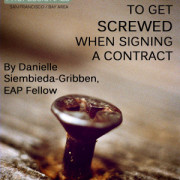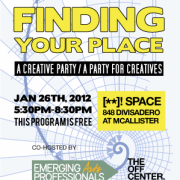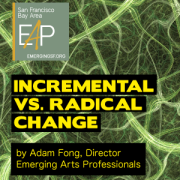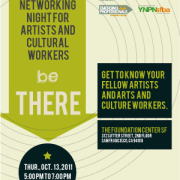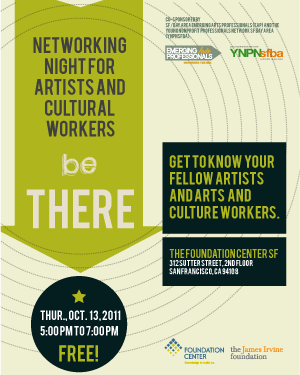How Not to Get Screwed When Signing a Contract
 By Danielle Siembieda-Gribben, EAP Fellow
By Danielle Siembieda-Gribben, EAP Fellow
For anyone just starting out in the public art world, it can seem tempting to take any commission you can get. No doubt it is competitive out there, and there may be dozens of people applying for the same calls for proposals.
If you have been one of the lucky few to receive a public art commission, you may be saying to yourself: “I am so lucky to even get selected, let me sign the contract before they change their minds!”
Before you do, think twice — and come prepared.
On January 31, 2012, I attended a webinar from California Lawyers for the Arts titled “Public Art Contracts: What Every Artist Needs to Know about Public Art Commissions, from RFQ to Moral Rights.”
Here are the top ten tips that I took away from the seminar.
- You will only receive 15 to 20 percent of the commission budget. For example, if the budget is $30,000, you will receive $4,500 for the entire duration of the project, from design to fabrication through execution. The lower the commission, the lower the artist fee.
- Your ideas are yours, not the city’s. When you present your proposal, put your name, copyright, and date on every page and slide. By doing this, you prevent others who may borrow or “appropriate” your idea to be built by someone else.
- If you are working with fabricators, do not sign any contracts with them until your own contract is finalized. Some fabricators may charge you for their design time and, if you end up losing a contract, you will have to pay them anyway.
- Most likely you will get paid on a time schedule with different payouts for different benchmarks. When this happens, front load the payment so you don’t get stuck with big fabrication bills at the end.
- Title vs. copyright. Never sign your copyright off to the city. You own that! Remember Prince? He had to change his name to a symbol to get out of a copyright dispute.
- Site compliance. The city shall be responsible for all expenses, labor, and equipment to prepare the site for the timely transportation and installation of artwork.
- Insurance. Yes, you need it. You’ll primarily need liability insurance until your work is installed, and then it is the city’s responsibility.
- Where did you get that model? If you use an image of a person, place, etc. in your work, make sure to get a release from them.
- Site credit. Don’t you hate it when you see an amazing piece of public art work but have no idea who did it? Make sure the city pays (not out of your budget) for a plaque or credit site near the work with your name on it.
- Budget. These budgets are the hardest. It takes a lot of time to put one together, but they are very important. Call around to fabricators to see the realistic cost for your project. If it’s out of scope, think about scaling down. Also, call a public art manager to see if they have any input.
There are many other ways to look at your public art contract. If you are nervous about confronting a city or other entity about the contract, keep in mind they have chosen you out of all the applicants, and are set on making the project work just as much as you are.
Make sure to check out the downloadable public art contract templates and resources, and let us know in the comments if you have any contract advice or horror stories to share.
Image: Ben Bunch

